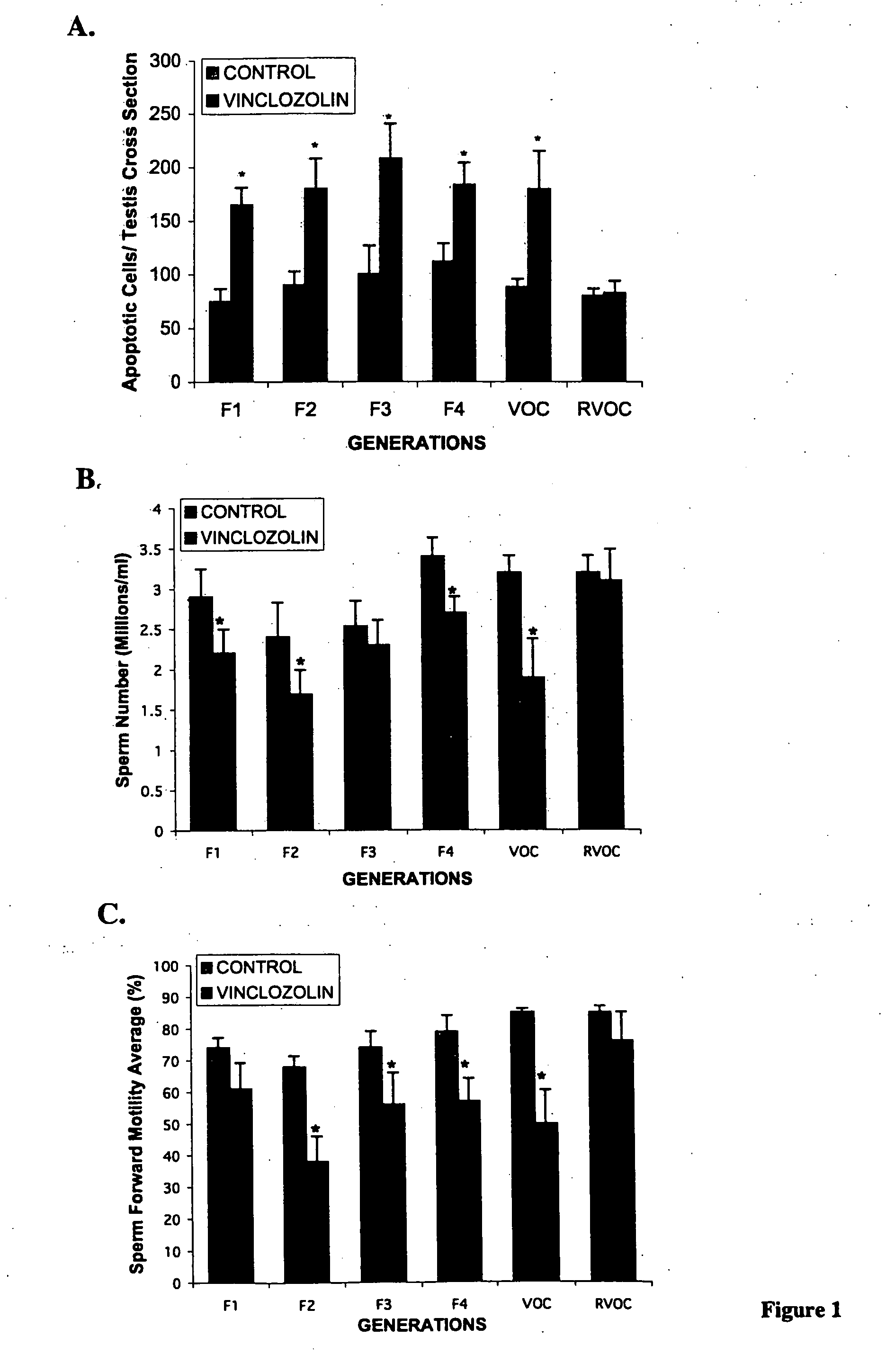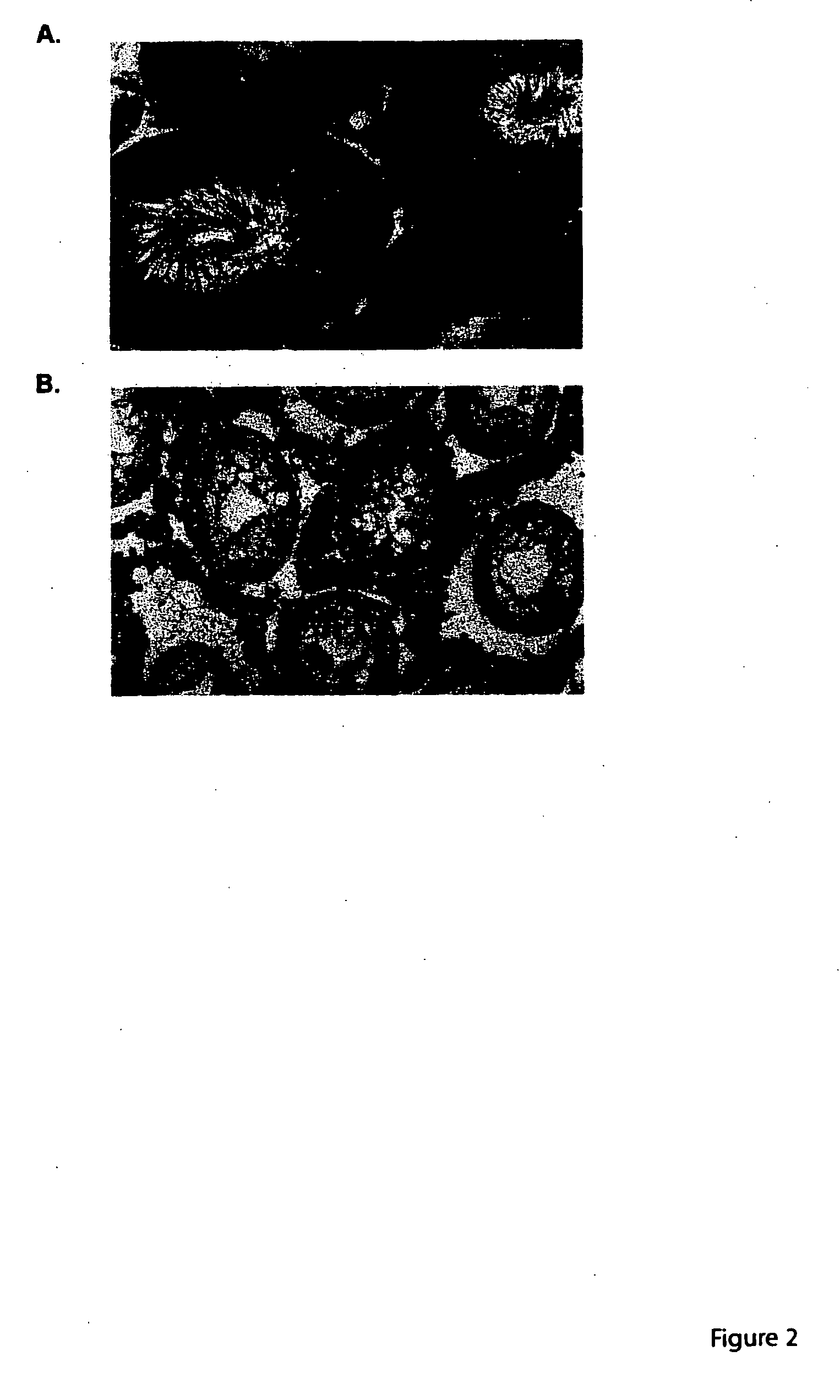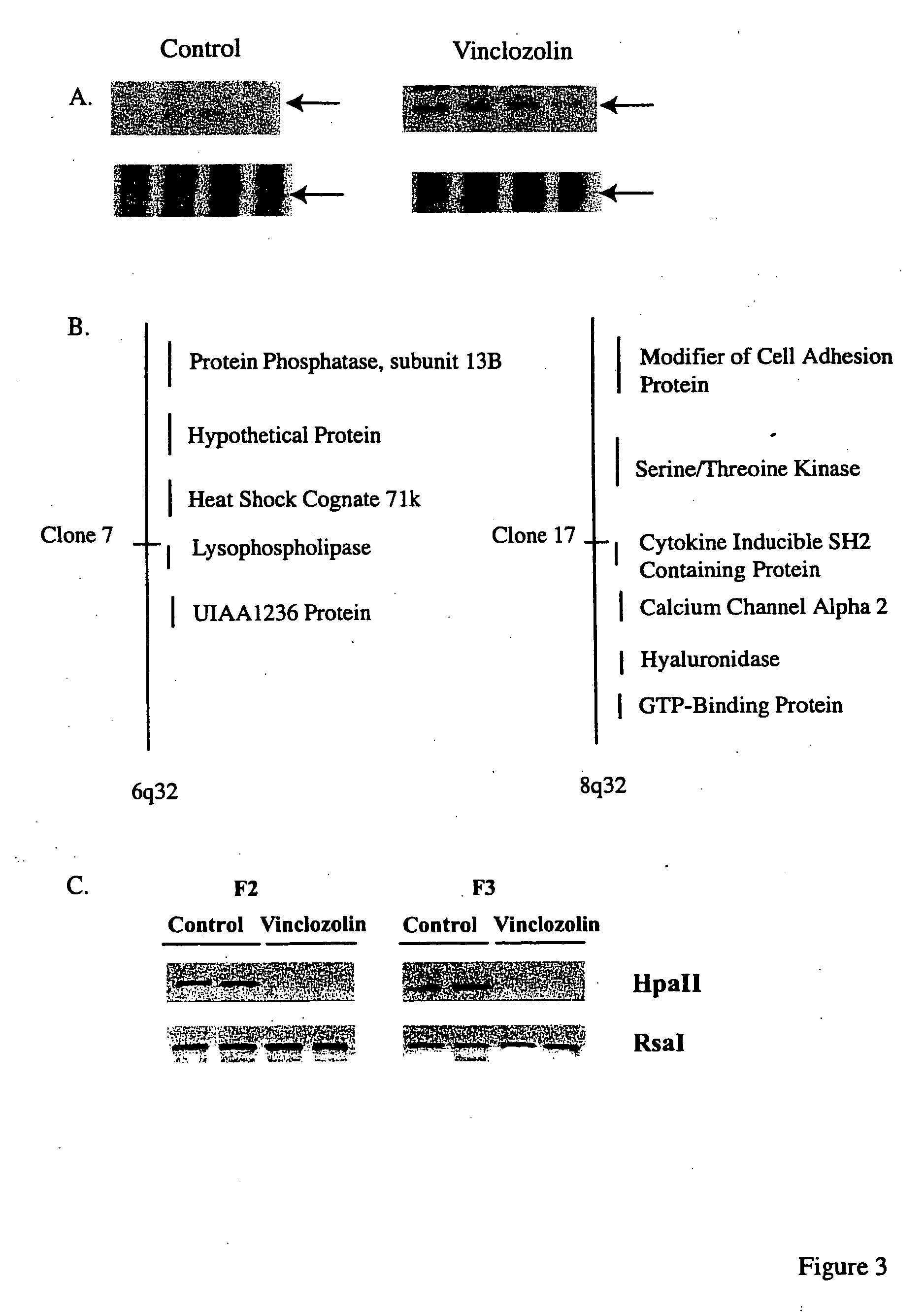Methods for diagnosing epigenetic, transgenerational effects of environmental toxicants on mammalian germ-lines and treating associated diseases
a technology of environmental toxicants and germ lines, applied in the field of epigenetic and transgenerational effects of environmental toxicants on mammalian germ lines, can solve the problems of insufficient investigation of inability to fully investigate the impact of multiple generations, and inability to effectively control the development of fetal gonadal cells
- Summary
- Abstract
- Description
- Claims
- Application Information
AI Technical Summary
Benefits of technology
Problems solved by technology
Method used
Image
Examples
example i
[0069] This example demonstrates the transgenerational effects of model endocrine disruptors (methoxychlor and vinclozolin), on the testis transcriptome during development, to determine the effects on testis development.
[0070] In Vivo Procedures: Gestating outbred Sprague-Dawley and inbred Fisher mother rats from timed, pregnant colonies housed at the Washington State University Vivarium, were given intraperitoneal injections of vinclozolin (100 mg / kg / day) and methoxychlor (200 mg / kg / day) from embryonic day 8-15 (E8-E15, sperm positive vaginal smear date=E0) of gestation (F0 generation) as previously described [123]. Gestating mothers administered vehicle, sesame oil or DMSO, served as controls. At least 6 lines (individual F0 injected females) were generated for controls and treated groups for these analyses. Male rats from control and treated groups were collected at P60-P180 for analyses. F1 treated males were bred to F1 treated females to generate the F2 treated generation and ...
experiment 1
[0077] To address potential toxic effects of the endocrine disruptors and identify the optimal timing, previous studies with only the F1 generation have been described [120, 121]. These studies with the use of methoxychlor and vinclozolin (i.e. anti-androgenic endocrine disruptor) in gestating mother animals, have shown no major effect on sex determination, or gross testis histology, throughout development. Animals were exposed in utero E8-E15 then spermatogenic defects were observed in the pubertal and adult F1 generation, [120, 121]. Treated animals had an increase in spermatogenic cell apoptosis. Similar results were observed at postnatal day 20 or day 60, for both endocrine disruptors. In addition to this decreased spermatogenic cell survival, sperm motility and morphology were also found to be impaired, [120, 121], FIG. 1. Interestingly, animals exposed in utero at E15-E20 (i.e. E20 around birth) to the same dose of endocrine disruptor had no spermatogenic cell defects, [120, 1...
experiment 2
[0080] Vinclozolin was used, and F1 generation male animals were bred to F1 generation females, from different litters, to obtain an F2 progeny. Subsequent breeding continued out four generations with sufficient numbers of animals to avoid any sibling inbreeding artifacts. Adult males from F1, F2, F3, and F4 generations between postnatal days 60 through 180 were collected, and testis isolated for histological examination. Caudal epididymal sperm was collected for sperm counts and motility measurements. Only the original gestating mother (F0) of the F1 generation received a transient endocrine disruptor treatment (E8-E15). A control group of animals were bred in a similar manner for analysis, following vehicle treatment, of the F0 gestating mother. Analysis of cellular apoptosis demonstrated a 2-3 fold increase in spermatogenic cell apoptosis, in the vinclozolin treated animals, for all F1, F2, F3 and F4 generations (FIG. 1A). Sperm numbers were reduced approximately 20%, and sperm f...
PUM
| Property | Measurement | Unit |
|---|---|---|
| pH | aaaaa | aaaaa |
| concentrations | aaaaa | aaaaa |
| morphology | aaaaa | aaaaa |
Abstract
Description
Claims
Application Information
 Login to View More
Login to View More - R&D
- Intellectual Property
- Life Sciences
- Materials
- Tech Scout
- Unparalleled Data Quality
- Higher Quality Content
- 60% Fewer Hallucinations
Browse by: Latest US Patents, China's latest patents, Technical Efficacy Thesaurus, Application Domain, Technology Topic, Popular Technical Reports.
© 2025 PatSnap. All rights reserved.Legal|Privacy policy|Modern Slavery Act Transparency Statement|Sitemap|About US| Contact US: help@patsnap.com



